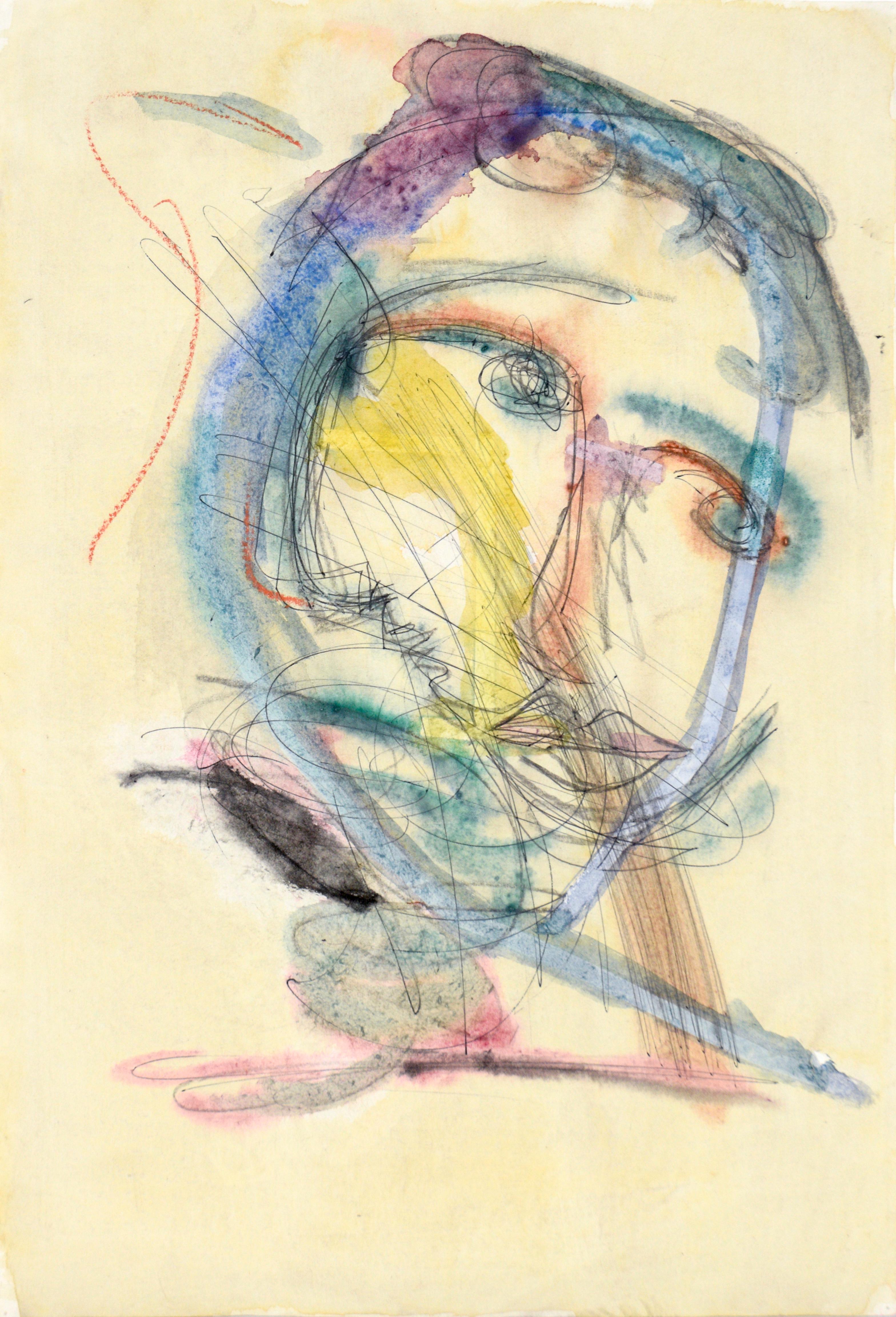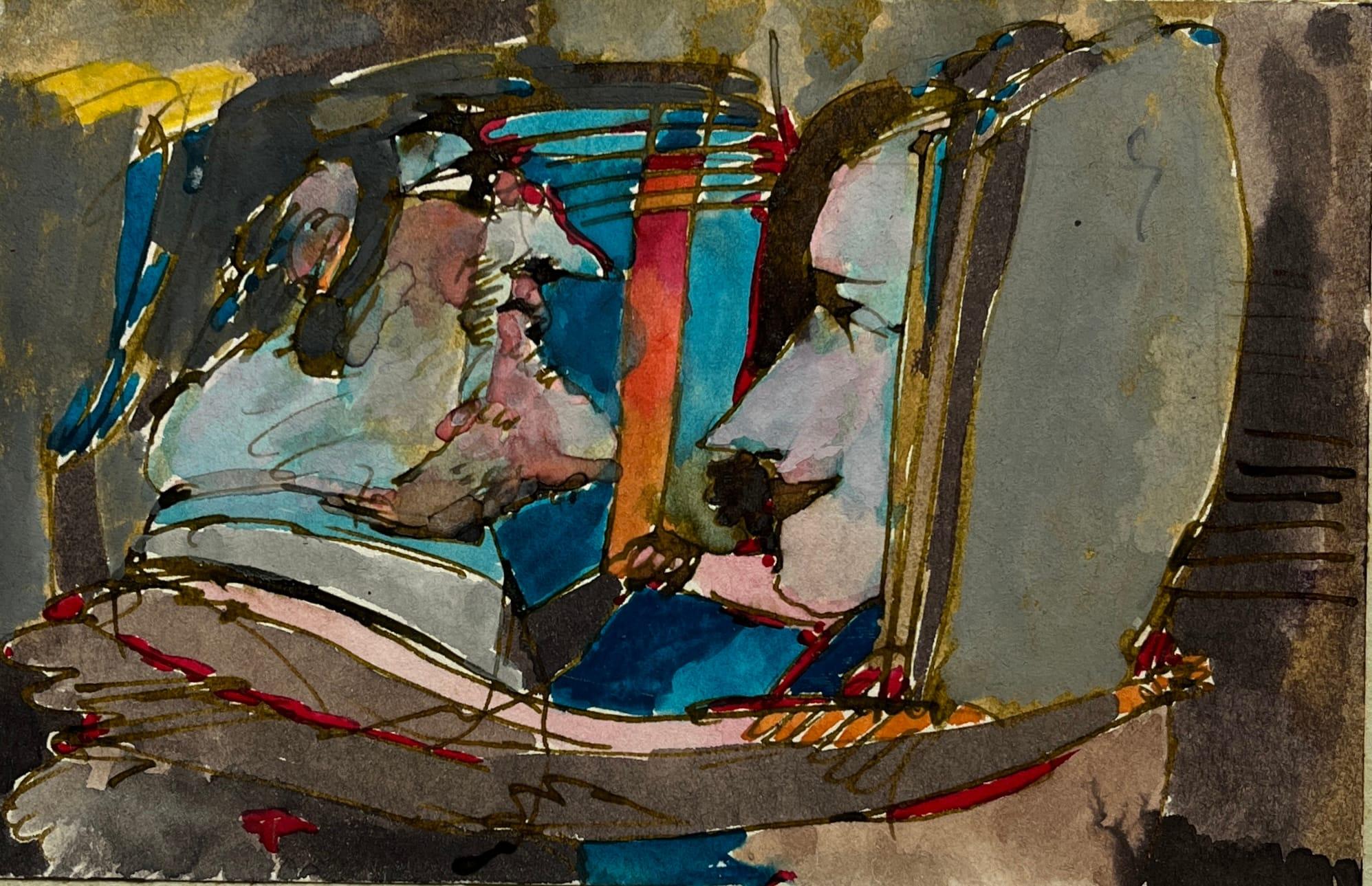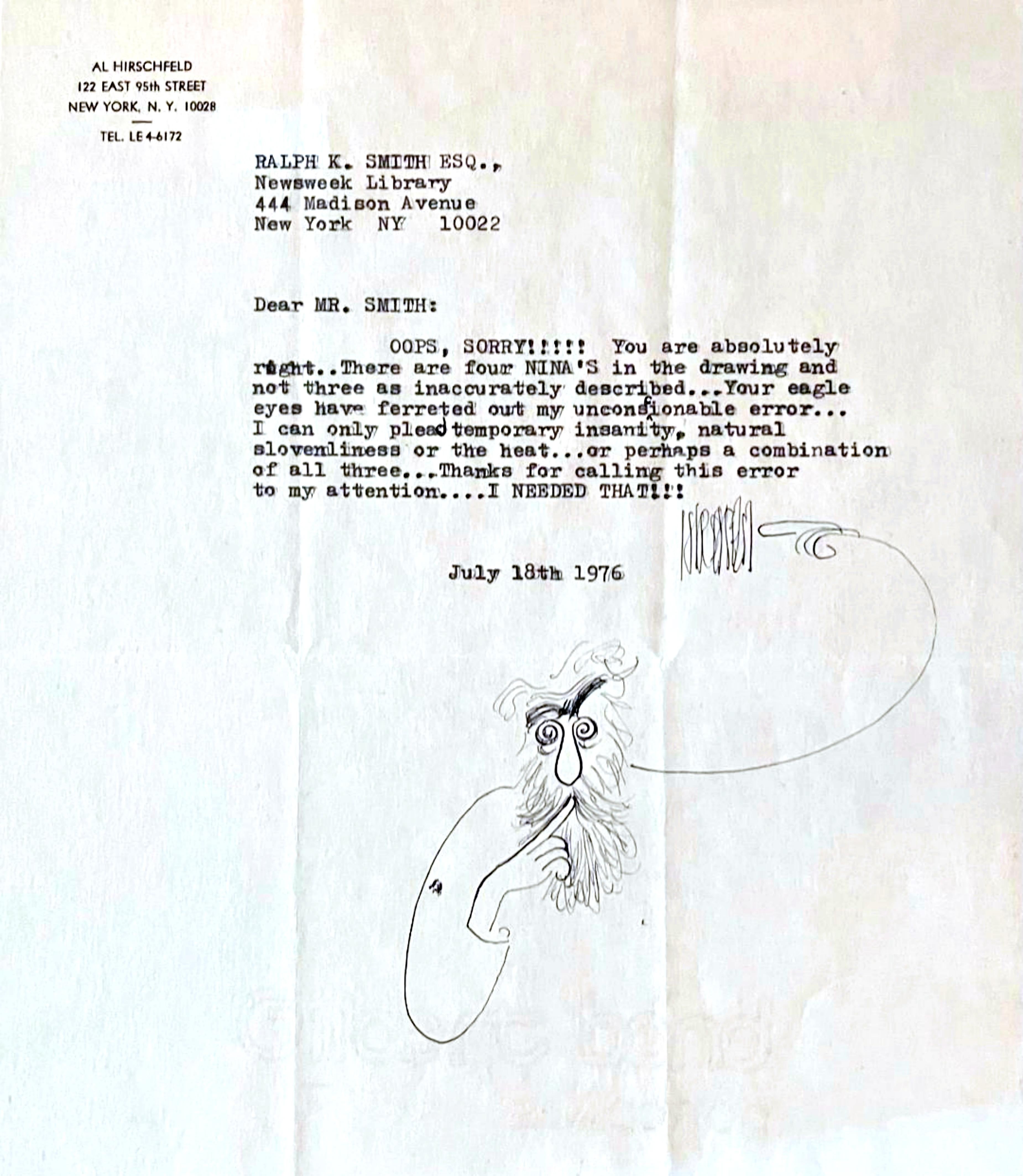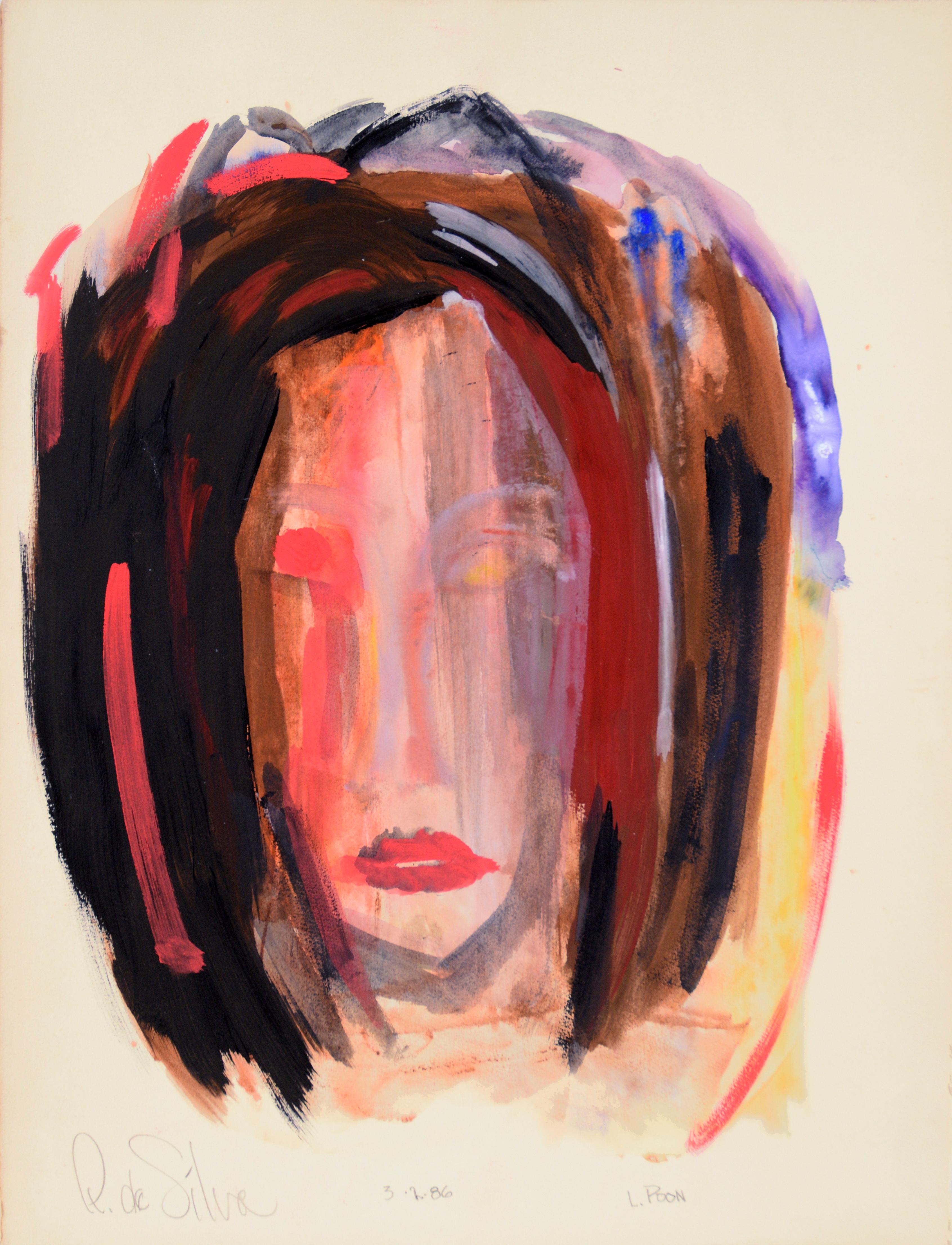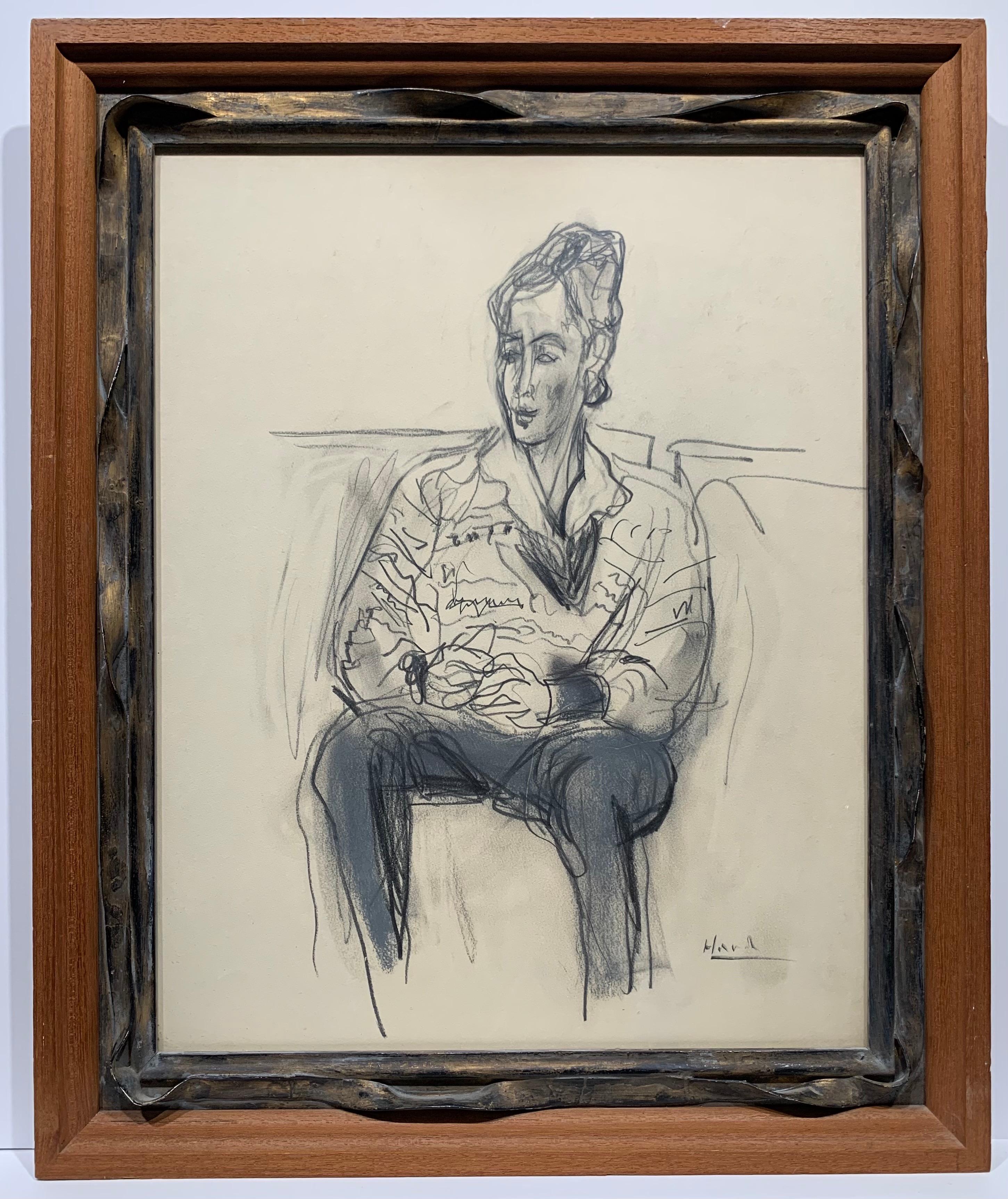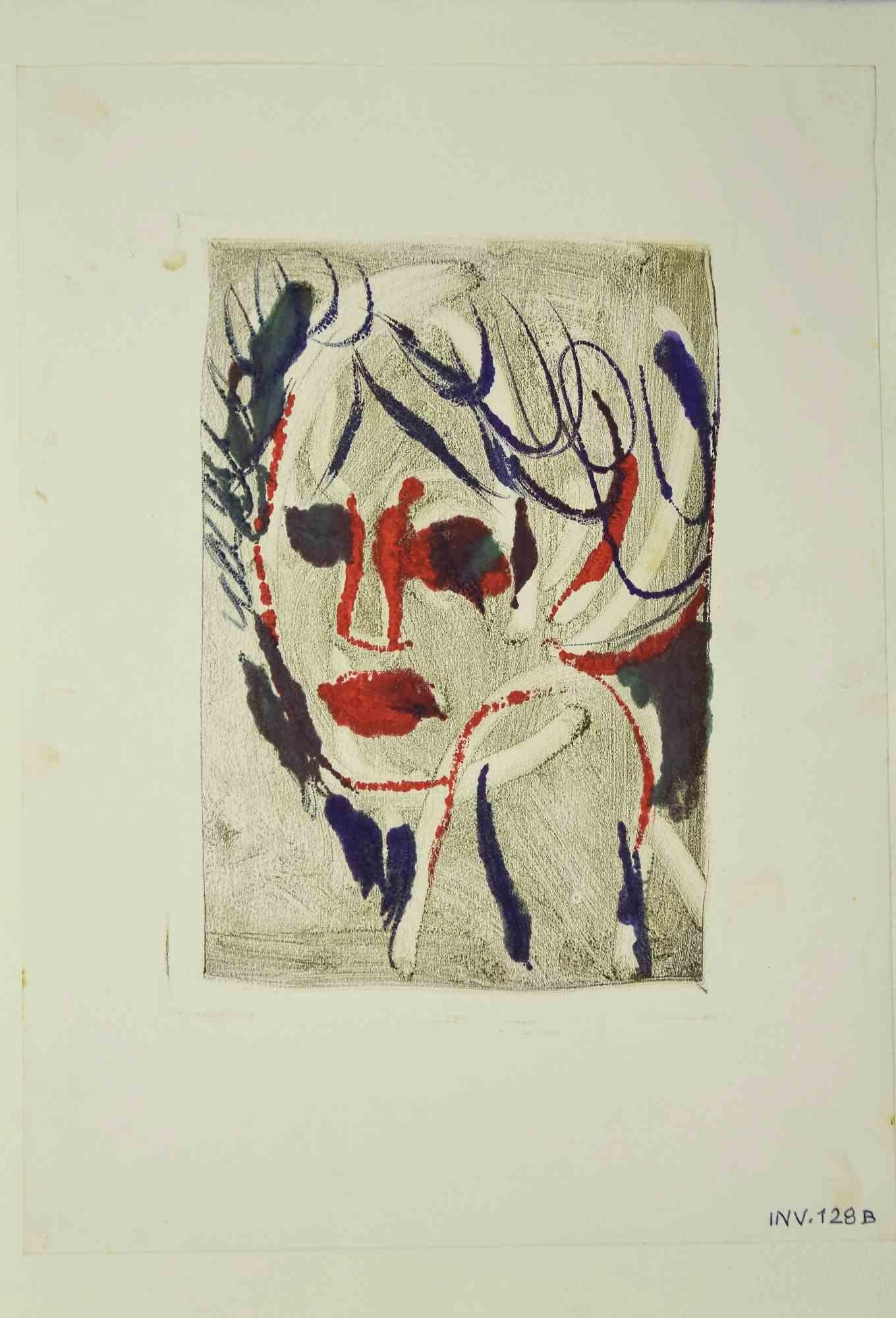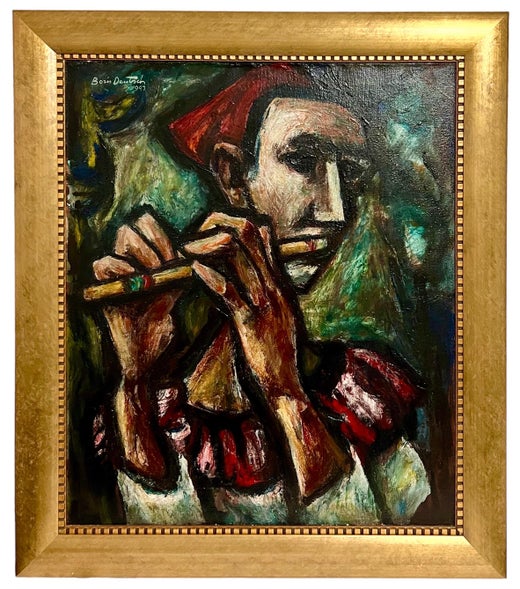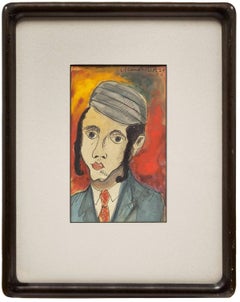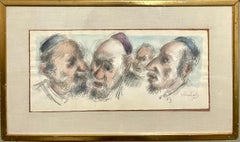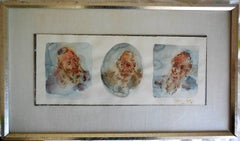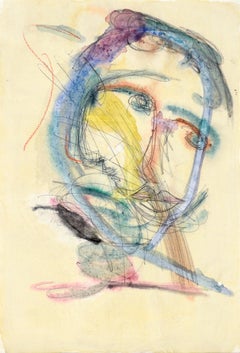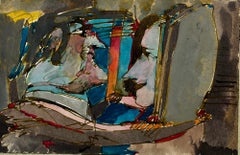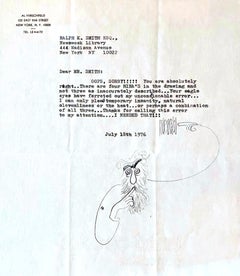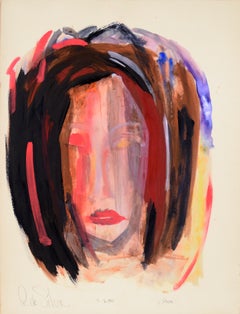Items Similar to Abstract Houses and Faces Ink Drawing and Watercolor Painting Shtetl Judaica
Want more images or videos?
Request additional images or videos from the seller
1 of 9
Boris DeutschAbstract Houses and Faces Ink Drawing and Watercolor Painting Shtetl Judaica
About the Item
Image size is 11.60" by 9"
Boris Deutsch (Lithuanian-American Modernist) was born in Krasnogorsk Lithuania june 4 1892 died in Los Angeles 1978. Entered the polytechnic school in riga 1905.School of applied arts berlin 1912. Settled in l.A. 1919 married riva segal 1924. Solo show u.C.L.A. 1926. Exhibited palace of the legion of honor san francisco 1930. Works for the resettlement administration 1936.Oakland art gallery annual exhibition guest of honor 1937. Exhibition at u.S.C. 1939. Post office murals for the treasury dept.And downtown main post office major murals 1941-1944.Teaches at otis art institute l.A. 1944-1950. First price in pepsicola competition for his painting what atomic war will do to you 1946 collection of the whitney museum n.Y. Exhibited westside jewish community center l.A. 1966. Chagall calls him the greatest jewish artist of our time 1955. The legacy of boris deutsch a centennial exhibition by the judah l. Magnes museum berkeley ca. May 24 -sept.20 1992. This is the most important jewish subject painting by this great artist painted in 1931 it resembles a Marc Chagall or Issachar Ber Ryback work of art very art deco in style and very large it hung at the jewish federation bldg. Los angeles gift of the artist from 1952-1979 at which time I purchased it from them.A painting of his wife riva sold at butterfields auction for 17.000 dollars a painting of three girls sold at sotheby's in 1982 for 32.000 this painting is unique although a non observant jew for him to paint this Chassidic jew must have reminded him of his early years in Lithuania and Riga.
- Creator:Boris Deutsch (1892-1978, American)
- Dimensions:Height: 15 in (38.1 cm)Width: 12 in (30.48 cm)
- Medium:
- Movement & Style:
- Period:
- Condition:very minor toning. art is mounted. small holes Please see photos.
- Gallery Location:Surfside, FL
- Reference Number:1stDibs: LU38214583622
Boris Deutsch
Boris Deutsch (1892-1978) was a 20th century modernist figurative painter and printmaker. He was born in Krasnagorka, Lithuania on June 4, 1892. Deutsch began drawing at age five and remained a self-taught artist, except for brief intervals at the Bloom Academy of Art in Riga, Latvia and the Kunstgewerbe Schule in Berlin. He moved to Seattle, WA in 1916 and then to Los Angeles in 2019. He began his career as a commercial art and set designer for movies. In the late 1930's he was recruited to paint murals for the New Deal, WPA, receiving numerous mural commissions to paint murals for the treasury department and several post office buildings. In 1941 he won the large competition to decorate the Terminal Annex Post Office in Los Angeles with eleven large murals. During the last decade of his life he experimented with monotypes and other printmaking techniques. Deutsch died in Los Angeles on Jan. 16, 1978. Boris Deutsch's art has been the focus of many exhibitions, including: The University of California, Los Angeles in 1926, The Palace of the Legion of Honor in San Francisco in 1930, Oakland Art Gallery in 1937, The University of Southern California (USC) in 1939, The Whitney Museum in New York in 1946 and a centennial exhibition by the Judah l. Magnes Museum in Berkeley California in 1992. In 1955, Marc Chagall called him the greatest Jewish artist of our time. Deutch's works are held by several institutions and museums, including the Smithsonian American Art Museum, the Metropolitan Museum of Art, the San Francisco Museum of Modern Art, the Los Angeles County Museum of Art, the San Diego Museum of Art, the Scribal Museum, the Judah L. Magnes Museum Berkeley, California, and the Pomona College Museum of Art.
About the Seller
4.9
Platinum Seller
Premium sellers with a 4.7+ rating and 24-hour response times
Established in 1995
1stDibs seller since 2014
1,760 sales on 1stDibs
Typical response time: 1 hour
- ShippingRetrieving quote...Shipping from: Surfside, FL
- Return Policy
Authenticity Guarantee
In the unlikely event there’s an issue with an item’s authenticity, contact us within 1 year for a full refund. DetailsMoney-Back Guarantee
If your item is not as described, is damaged in transit, or does not arrive, contact us within 7 days for a full refund. Details24-Hour Cancellation
You have a 24-hour grace period in which to reconsider your purchase, with no questions asked.Vetted Professional Sellers
Our world-class sellers must adhere to strict standards for service and quality, maintaining the integrity of our listings.Price-Match Guarantee
If you find that a seller listed the same item for a lower price elsewhere, we’ll match it.Trusted Global Delivery
Our best-in-class carrier network provides specialized shipping options worldwide, including custom delivery.More From This Seller
View AllHasidic Boy, Judaica Portrait, Ink and Watercolor
By Mane Katz
Located in Surfside, FL
Mane-Katz (1894-1962) composes an ink and watercolor portrait of a Hasidic young lad.
Signed upper right Mané-Katz, circa 1929.
Mane-Katz was a Litvak painter born in Ukraine best known for his depictions of the Jewish shtetl in Eastern Europe. Emmanuel Mané-Katz (Hebrew:מאנה כץ), born Mane Leyzerovich Kats (1894–1962), was a Litvak painter born in Kremenchuk, Ukraine, best known for his depictions of the Jewish shtetl in Eastern Europe.
Mane-Katz moved to Paris at the age of 19 to study art, although his father wanted him to be a rabbi. During the First World War he returned to Russia, at first working and exhibiting in Petrograd; following the October revolution, he traveled back to Kremenchuk, where he taught art. In 1921, due to the ongoing fighting in his hometown during the civil war, he moved once again to Paris. There he became friends with Pablo Picasso and other important artists, and was affiliated with the art movement known as the School of Paris; together with other outstanding Jewish artists of that milieu, he is sometimes considered to be part of a group referred to specifically as the Jewish School of Paris. Includes painters Jankel Adler, Arbit Blatas, Marc Chagall, Jacques Chapiro, Michel Kikoine...
Category
20th Century Modern Portrait Drawings and Watercolors
Materials
Paper, Ink, Watercolor
Rare Modernist Hungarian Rabbi Pastel Drawing Gouache Painting Judaica Art Deco
By Hugó Scheiber
Located in Surfside, FL
Rabbi in the synagogue at prayer wearing tallit and tefillin.
Hugó Scheiber (born 29 September 1873 in Budapest – died there 7 March 1950) was a Hungarian modernist painter.
Hugo Scheiber was brought from Budapest to Vienna at the age of eight where his father worked as a sign painter for the Prater Theater. At fifteen, he returned with his family to Budapest and began working during the day to help support them and attending painting classes at the School of Design in the evening, where Henrik Papp was one of his teachers. He completed his studies in 1900. His work was at first in a post-Impressionistic style but from 1910 onward showed his increasing interest in German Expressionism and Futurism. This made it of little interest to the conservative Hungarian art establishment.
However, in 1915 he met the great Italian avant-gardist Filippo Tommaso Marinetti and the two painters became close friends. Marinetti invited him to join the Futurist Movement. The uniquely modernist style that he developed was, however, closer to German Expressionism than to Futurism and eventually drifted toward an international art deco manner similar to Erté's. In 1919, he and his friend Béla Kádar held an exhibition at the Hevesy Salon in Vienna. It was a great success and at last caused the Budapest Art Museum to acquire some of Scheiber's drawings. Encouraged, Scheiber came back to live in Vienna in 1920.
A turning point in Scheiber's career came a year later, when Herwarth Walden, founder of Germany's leading avant-garde periodical, Der Sturm, and of the Sturm Gallery in Berlin, became interested in Scheiber's work. Scheiber moved to Berlin in 1922, and his paintings soon appeared regularly in Walden's magazine and elsewhere. Exhibitions of his work followed in London, Rome, La Paz, and New York.
Scheiber's move to Germany coincided with a significant exodus of Hungarian artists to Berlin, including Laszlo Moholy-Nagy and Sandor Bortnyik. There had been a major split in ideology among the Hungarian avant-garde. The Constructivist and leader of the Hungarian avantgarde, Lajos Kassák (painted by Hugó Scheiber in 1930) believed that art should relate to all the needs of contemporary humankind. Thus he refused to compromise the purity of his style to reflect the demands of either the ruling class or socialists and communists. The other camp believed that an artist should be a figurehead for social and political change.
The fall out and factions that resulted from this politicisation resulted in most of the Hungarian avant gardists leaving Vienna for Berlin. Hungarian émigrés made up one of the largest minority groups in the German capital and the influx of their painters had a significant effect on Hungarian and international art. Another turning point of Scheiber's career came in 1926, with the New York exhibition of the Société Anonyme, organized by Katherine Dreier. Scheiber and other important avant garde artists from more than twenty-three countries were represented. In 1933, Scheiber was invited by Marinetti to participate in the great meeting of the Futurists held in Rome in late April 1933, Mostra Nazionale d’Arte Futurista where he was received with great enthusiasm. Gradually, the Hungarian artists began to return home, particularly with the rise of Nazism in Germany. Kádar went back from Berlin in about 1932 and Scheiber followed in 1934.
He was then at the peak of his powers and had a special flair in depicting café and cabaret life in vivid colors, sturdily abstracted forms and spontaneous brush strokes. Scheiber depicted cosmopolitan modern life using stylized shapes and expressive colors. His preferred subjects were cabaret and street scenes, jazz musicians, flappers, and a series of self-portraits (usually with a cigar). his principal media being gouache and oil. He was a member of the prestigious New Society of Artists (KUT—Képzőművészek Új Társasága)and seems to have weathered Hungary's post–World War II transition to state-communism without difficulty. He continued to be well regarded, eventually even receiving the posthumous honor of having one of his images used for a Russian Soviet postage stamp (see image above). Hugó Scheiber died in Budapest in 1950.
Paintings by Hugó Scheiber form part of permanent museum collections in Budapest (Hungarian National Museum), Pecs (Jannus Pannonius Museum), Vienna, New York, Bern and elsewhere. His work has also been shown in many important exhibitions, including:
"The Nell Walden Collection," Kunsthaus Zürich (1945)
"Collection of the Société Anonyme," Yale University Art Gallery, New Haven, Connecticut (1950)
"Hugó Scheiber: A Commemorative Exhibition," Hungarian National Museum, Budapest (1964)
"Ungarische Avantgarde," Galleria del Levante, Munich (1971)
"Paris-Berlin 1900-1930," Centre Georges Pompidou, Paris (1978)
"L’Art en Hongrie, 1905-1920," Musée d’Art et l’Industrie, Saint-Etienne (1980)
"Ungarische Avantgarde in der Weimarer Republik," Marburg (1986)
"Modernizmus," Eresz & Maklary Gallery, Budapest (2006)
"Hugó Scheiber & Béla Kádár," Galerie le Minotaure, Paris and Tel Aviv (2007)
Hugó Scheiber's paintings continue to be regularly sold at Sotheby's, Christie's, Gillen's Arts (London), Papillon Gallery (Los Angeles) and other auction houses.
He was included in the exhibition The Art Of Modern Hungary 1931 and other exhibitions along with Vilmos Novak Aba, Count Julius Batthyany, Pal Bor, Bela Buky, Denes Csanky, Istvan Csok, Bela Czobel, Peter Di Gabor, Bela Ivanyi Grunwald, Baron Ferenc Hatvany, Lipot Herman, Odon Marffy, C. Pal Molnar...
Category
Early 20th Century Modern Figurative Paintings
Materials
Paper, Charcoal, Pastel, Watercolor, Gouache
Chaim Gross Mid Century Mod Judaica Jewish Watercolor Painting Rabbis WPA Artist
By Chaim Gross
Located in Surfside, FL
Chaim Gross (American, 1904-1991)
Watercolor painting
Rabbinical Talmudic Discussion
Hand signed
17 x 29 framed, paper 10 x 22
Chaim Gross (March 17, 1904 – May 5, 1991) was an American modernist sculptor and educator.
Gross was born to a Jewish family in Austrian Galicia, in the village of Wolowa (now known as Mezhgorye, Ukraine), in the Carpathian Mountains. In 1911, his family moved to Kolomyia (which was annexed into the Ukrainian USSR in 1939 and became part of newly independent Ukraine in 1991). When World War I ended, Gross and brother Avrom-Leib went to Budapest to join their older siblings Sarah and Pinkas. Gross applied to and was accepted by the art academy in Budapest and studied under the painter Béla Uitz, though within a year a new regime under Miklos Horthy took over and attempted to expel all Jews and foreigners from the country. After being deported from Hungary, Gross began art studies at the Kunstgewerbeschule in Vienna, Austria shortly before immigrating to the United States in 1921. Gross's studies continued in the United States at the Beaux-Arts Institute of Design, where he studied with Elie Nadelman and others, and at the Art Students League of New York, with Robert Laurent. He also attended the Educational Alliance Art School, studying under Abbo Ostrowsky, at the same time as Moses Soyer and Peter Blume.
In 1926 Gross began teaching at The Educational Alliance, and continued teaching there for the next 50 years. Louise Nevelson was among his students at the Alliance (in 1934), during the time she was transitioning from painting to sculpture. In the late 1920s and early 1930s he exhibited at the Salons of America exhibitions at the Anderson Galleries and, beginning in 1928, at the Whitney Studio Club. In 1929, Gross experimented with printmaking, and created an important group of 15 linocuts and lithographs of landscapes, New York City streets and parks, women in interiors, the circus, and vaudeville. The entire suite is now in the collection of the Philadelphia Museum of Art. Gross returned to the medium of printmaking in the 1960s, and produced approximately 200 works in the medium over the next two decades. For more than sixty years Chaim Gross's art has expressed optimistic, affirming themes, Judaica, balancing acrobats, cyclists, trapeze artists and mothers and children convey joyfulness, modernism, exuberance, love, and intimacy. This aspect of his work remained consistent with his Jewish Hasidic heritage, which teaches that only in his childlike happiness is man nearest to God.
In March 1932 Gross had his first solo exhibition at Gallery 144 in New York City. For a short time they represented Gross, as well as his friends Milton Avery, Moses Soyer, Ahron Ben-Shmuel and others.
Gross was primarily a practitioner of the direct carving method, with the majority of his work being carved from wood. Other direct carvers in early 20th-century American art include William Zorach, Jose de Creeft, and Robert Laurent. Works by Chaim Gross can be found in major museums and private collections throughout the United States, with substantial holdings (27 sculptures) at the Hirshhorn Museum and Sculpture Garden. A key work from this era, now at the Smithsonian American Art Museum, is the 1932 birds-eye maple Acrobatic Performers, which is also only one and one quarter inch thick.
In 1933 Gross joined the government's PWAP (Public Works of Art Project), which transitioned into the WPA (Works Progress Administration), which Gross worked for later in the 1930s. Under these programs Gross taught and demonstrated art, made sculptures that were placed in schools and public colleges, made work for Federal buildings including the Federal Trade Commission Building, and for the France Overseas and Finnish Buildings at the 1939 New York World's Fair. Gross was also recognized during these years with a silver medal at the Exposition universelle de 1937 in Paris, and in 1942, with a purchase prize at the Metropolitan Museum of Art's "Artists for Victory" exhibition for his wood sculpture of famed circus performer Lillian Leitzel.
In 1949 Gross sketched Chaim Weizmann, Israeli President, at several functions in New York City where Weizmann was speaking, Gross completed the bust in bronze later that year. Gross returned to Israel for three months in 1951 (the second of many trips there in the postwar years) to paint a series of 40 watercolors of life in various cities. This series was exhibited at the Jewish Museum (Manhattan) in 1953. He also did some important Hebrew medals.
In the 1950s Gross began to make more bronze sculptures alongside his wood and stone pieces, and in 1957 and 1959 he traveled to Rome to work with famed bronze foundries including the Nicci foundry. At the end of the decade Gross was working primarily in bronze which allowed him to create open forms, large-scale works and of course, multiple casts. Gross's large-scale bronze The Family, donated to New York City in 1991 in honor of Mayor Ed Koch, and installed at the Bleecker Street Park at 11th street, is now a fixture of Greenwich Village. In 1959, a survey of Gross's sculpture in wood, stone, and bronze was featured in the exhibit Four American Expressionists curated by Lloyd Goodrich at the Whitney Museum of American Art, with work by Abraham Rattner, Doris Caesar, and Karl Knaths. In 1976, a selection from Gross's important collection of historic African sculpture, formed since the late 1930s, was exhibited at the Worcester Art Museum in the show The Sculptor's Eye: The African Art Collection of Mr. and Mrs. Chaim Gross. Gross was elected into the National Academy of Design as an Associate member, and became a full Academician in 1981. In 1984, he was inducted into the American Academy of Arts and Letters, with Jacob Lawrence and Lukas Foss. In the fall of 1991, Allen Ginsberg gave an important tribute to Gross at the American Academy of Arts and Letters, which is published in their Proceedings. In 1994, Forum Gallery, which now represents the Chaim Gross estate, held a memorial exhibition featuring a sixty-year survey of Gross's work.In March 1932 Gross had his first solo exhibition at Gallery 144 in New York City. For a short time they represented Gross, as well as his friends Milton Avery, Moses Soyer, Ahron Ben-Shmuel and others.
Gross was primarily a practitioner of the direct carving method, with the majority of his work being carved from wood. Other direct carvers in early 20th-century American art include William Zorach, Jose de Creeft, and Robert Laurent. Works by Chaim Gross can be found in major museums and private collections throughout the United States, with substantial holdings (27 sculptures) at the Hirshhorn Museum and Sculpture Garden. A key work from this era, now at the Smithsonian American Art Museum, is the 1932 birds-eye maple Acrobatic Performers, which is also only one and one quarter inch thick.
In 1933 Gross joined the government's PWAP (Public Works of Art Project), which transitioned into the WPA (Works Progress Administration), which Gross worked for later in the 1930s. Under these programs Gross taught and demonstrated art, made sculptures that were placed in schools and public colleges, made work for Federal buildings including the Federal Trade Commission Building, and for the France Overseas and Finnish Buildings at the 1939 New York World's Fair. Gross was also recognized during these years with a silver medal at the Exposition universelle de 1937 in Paris, and in 1942, with a purchase prize at the Metropolitan Museum of Art's "Artists for Victory" exhibition for his wood sculpture of famed circus performer Lillian Leitzel.
In 1949 Gross sketched Chaim Weizmann, President of Israel, at several functions in New York City where Weizmann was speaking, Gross completed the bust in bronze later that year. Gross returned to Israel for three months in 1951 (the second of many trips there in the postwar years) to paint a series of 40 watercolors of life in various cities. This series was exhibited at the Jewish Museum (Manhattan) in 1953.
In the 1950s Gross began to make more bronze sculptures alongside his wood and stone pieces, and in 1957 and 1959 he traveled to Rome to work with famed bronze foundries including the Nicci foundry. At the end of the decade Gross was working primarily in bronze which allowed him to create open forms, large-scale works and of course, multiple casts. Gross's large-scale bronze The Family, donated to New York City in 1991 in honor of Mayor Ed Koch, and installed at the Bleecker Street Park at 11th street, is now a fixture of Greenwich Village. In 1959, a survey of Gross's sculpture in wood, stone, and bronze was featured in the exhibit Four American Expressionists curated by Lloyd Goodrich at the Whitney Museum of American Art, with work by Abraham Rattner, Doris Caesar, and Karl Knaths. In 1976, a selection from Gross's important collection of historic African sculpture, formed since the late 1930s, was exhibited at the Worcester Art Museum in the show The Sculptor's Eye: The African Art Collection of Mr. and Mrs. Chaim Gross. Gross was elected into the National Academy of Design as an Associate member, and became a full Academician in 1981. In 1984, he was inducted into the American Academy of Arts and Letters, with Jacob Lawrence and Lukas Foss. In the fall of 1991, Allen Ginsberg gave an important tribute to Gross at the American Academy of Arts and Letters, which is published in their Proceedings. In 1994, Forum Gallery, which now represents the Chaim Gross estate, held a memorial exhibition featuring a sixty-year survey of Gross's work.
Gross was a professor of printmaking and sculpture at both the Educational Alliance and the New School for Social Research in New York City, as well as at the Brooklyn Museum Art School, the MoMA art school, the Art Student's League and the New Art School (which Gross ran briefly with Alexander Dobkin...
Category
Mid-20th Century American Modern Figurative Drawings and Watercolors
Materials
Paper, Watercolor
The Rabbis, Judaica portraits
By Chaim Gross
Located in Surfside, FL
the piece without the original frame measures 18X7.5 inchesThis is a wonderful watercolor by one of America's most treasured
artists, Chaim Gross. Throughout his lifetime Gross has gone through tragedy and a real test of faith however, he has the unique ability to focus and direct his expression to the most joyful and beautiful works of art, such as the present lot. For more than sixty years Chaim Gross's art has expressed optimistic, affirming themes. His acrobats, cyclists, and mothers and children convey joyfulness, exuberance, love, and intimacy. This aspect of his work
remained consistent with his Hasidic heritage, which teaches that "only in his
childlike happiness is man nearest to God."
Chaim Gross, born in Wolowa, Austria in 1904, was educated at the Beaux Arts Institute of Design and at the Art Student's League in New York. Chaim Gross's work was greatly influenced by his experiences during a period of international conflict, World War II. He had moved to Kolomyya from Wolowa to get a better education, but the Germans came to occupy, killing, raping, and looting. Gross and his family were chased from one village to
the next. He wrote, "We were sleeping on roofs and in the fields, with the sound of cannon fire...
Category
1960s Modern Portrait Drawings and Watercolors
Materials
Watercolor, Archival Paper
Jerusalemite Yeshiva Scholar, Judaica Watercolor
Located in Surfside, FL
Judaica watercolor portrait, Israel, signed l.r.
Category
20th Century Modern Portrait Drawings and Watercolors
Materials
Watercolor
Chaim Gross Judaica Jewish Watercolor Painting Rabbi Klezmer Music WPA Artist
By Chaim Gross
Located in Surfside, FL
Chaim Gross (American, 1904-1991)
Watercolor with pencil painting
Rabbi Klezmer music concert, flute player.
Hand signed
framed: 15 X 28.5, paper: 9.5 X 23
Chaim Gross (March 17, 1904 – May 5, 1991) was an American modernist sculptor and educator.
Gross was born to a Jewish family in Austrian Galicia, in the village of Wolowa (now known as Mezhgorye, Ukraine), in the Carpathian Mountains. In 1911, his family moved to Kolomyia (which was annexed into the Ukrainian USSR in 1939 and became part of newly independent Ukraine in 1991). When World War I ended, Gross and brother Avrom-Leib went to Budapest to join their older siblings Sarah and Pinkas. Gross applied to and was accepted by the art academy in Budapest and studied under the painter Béla Uitz, though within a year a new regime under Miklos Horthy took over and attempted to expel all Jews and foreigners from the country. After being deported from Hungary, Gross began art studies at the Kunstgewerbeschule in Vienna, Austria shortly before immigrating to the United States in 1921. Gross's studies continued in the United States at the Beaux-Arts Institute of Design, where he studied with Elie Nadelman and others, and at the Art Students League of New York, with Robert Laurent. He also attended the Educational Alliance Art School, studying under Abbo Ostrowsky, at the same time as Moses Soyer and Peter Blume.
In 1926 Gross began teaching at The Educational Alliance, and continued teaching there for the next 50 years. Louise Nevelson was among his students at the Alliance (in 1934), during the time she was transitioning from painting to sculpture. In the late 1920s and early 1930s he exhibited at the Salons of America exhibitions at the Anderson Galleries and, beginning in 1928, at the Whitney Studio Club. In 1929, Gross experimented with printmaking, and created an important group of 15 linocuts and lithographs of landscapes, New York City streets and parks, women in interiors, the circus, and vaudeville. The entire suite is now in the collection of the Philadelphia Museum of Art. Gross returned to the medium of printmaking in the 1960s, and produced approximately 200 works in the medium over the next two decades. For more than sixty years Chaim Gross's art has expressed optimistic, affirming themes, Judaica, balancing acrobats, cyclists, trapeze artists and mothers and children convey joyfulness, modernism, exuberance, love, and intimacy. This aspect of his work remained consistent with his Jewish Hasidic heritage, which teaches that only in his childlike happiness is man nearest to God.
In March 1932 Gross had his first solo exhibition at Gallery 144 in New York City. For a short time they represented Gross, as well as his friends Milton Avery, Moses Soyer, Ahron Ben-Shmuel and others.
Gross was primarily a practitioner of the direct carving method, with the majority of his work being carved from wood. Other direct carvers in early 20th-century American art include William Zorach, Jose de Creeft, and Robert Laurent. Works by Chaim Gross can be found in major museums and private collections throughout the United States, with substantial holdings (27 sculptures) at the Hirshhorn Museum and Sculpture Garden. A key work from this era, now at the Smithsonian American Art Museum, is the 1932 birds-eye maple Acrobatic Performers, which is also only one and one quarter inch thick.
In 1933 Gross joined the government's PWAP (Public Works of Art Project), which transitioned into the WPA (Works Progress Administration), which Gross worked for later in the 1930s. Under these programs Gross taught and demonstrated art, made sculptures that were placed in schools and public colleges, made work for Federal buildings including the Federal Trade Commission Building, and for the France Overseas and Finnish Buildings at the 1939 New York World's Fair. Gross was also recognized during these years with a silver medal at the Exposition universelle de 1937 in Paris, and in 1942, with a purchase prize at the Metropolitan Museum of Art's "Artists for Victory" exhibition for his wood sculpture of famed circus performer Lillian Leitzel.
In 1949 Gross sketched Chaim Weizmann, Israeli President, at several functions in New York City where Weizmann was speaking, Gross completed the bust in bronze later that year. Gross returned to Israel for three months in 1951 (the second of many trips there in the postwar years) to paint a series of 40 watercolors of life in various cities. This series was exhibited at the Jewish Museum (Manhattan) in 1953. He also did some important Hebrew medals.
In the 1950s Gross began to make more bronze sculptures alongside his wood and stone pieces, and in 1957 and 1959 he traveled to Rome to work with famed bronze foundries including the Nicci foundry. At the end of the decade Gross was working primarily in bronze which allowed him to create open forms, large-scale works and of course, multiple casts. Gross's large-scale bronze The Family, donated to New York City in 1991 in honor of Mayor Ed Koch, and installed at the Bleecker Street Park at 11th street, is now a fixture of Greenwich Village. In 1959, a survey of Gross's sculpture in wood, stone, and bronze was featured in the exhibit Four American Expressionists curated by Lloyd Goodrich at the Whitney Museum of American Art, with work by Abraham Rattner, Doris Caesar, and Karl Knaths. In 1976, a selection from Gross's important collection of historic African sculpture, formed since the late 1930s, was exhibited at the Worcester Art Museum in the show The Sculptor's Eye: The African Art Collection of Mr. and Mrs. Chaim Gross. Gross was elected into the National Academy of Design as an Associate member, and became a full Academician in 1981. In 1984, he was inducted into the American Academy of Arts and Letters, with Jacob Lawrence and Lukas Foss. In the fall of 1991, Allen Ginsberg gave an important tribute to Gross at the American Academy of Arts and Letters, which is published in their Proceedings. In 1994, Forum Gallery, which now represents the Chaim Gross estate, held a memorial exhibition featuring a sixty-year survey of Gross's work.In March 1932 Gross had his first solo exhibition at Gallery 144 in New York City. For a short time they represented Gross, as well as his friends Milton Avery, Moses Soyer, Ahron Ben-Shmuel and others.
Gross was primarily a practitioner of the direct carving method, with the majority of his work being carved from wood. Other direct carvers in early 20th-century American art include William Zorach, Jose de Creeft, and Robert Laurent. Works by Chaim Gross can be found in major museums and private collections throughout the United States, with substantial holdings (27 sculptures) at the Hirshhorn Museum and Sculpture Garden. A key work from this era, now at the Smithsonian American Art Museum, is the 1932 birds-eye maple Acrobatic Performers, which is also only one and one quarter inch thick.
In 1933 Gross joined the government's PWAP (Public Works of Art Project), which transitioned into the WPA (Works Progress Administration), which Gross worked for later in the 1930s. Under these programs Gross taught and demonstrated art, made sculptures that were placed in schools and public colleges, made work for Federal buildings including the Federal Trade Commission Building, and for the France Overseas and Finnish Buildings at the 1939 New York World's Fair. Gross was also recognized during these years with a silver medal at the Exposition universelle de 1937 in Paris, and in 1942, with a purchase prize at the Metropolitan Museum of Art's "Artists for Victory" exhibition for his wood sculpture of famed circus performer Lillian Leitzel.
In 1949 Gross sketched Chaim Weizmann, President of Israel, at several functions in New York City where Weizmann was speaking, Gross completed the bust in bronze later that year. Gross returned to Israel for three months in 1951 (the second of many trips there in the postwar years) to paint a series of 40 watercolors of life in various cities. This series was exhibited at the Jewish Museum (Manhattan) in 1953.
In the 1950s Gross began to make more bronze sculptures alongside his wood and stone pieces, and in 1957 and 1959 he traveled to Rome to work with famed bronze foundries including the Nicci foundry. At the end of the decade Gross was working primarily in bronze which allowed him to create open forms, large-scale works and of course, multiple casts. Gross's large-scale bronze The Family, donated to New York City in 1991 in honor of Mayor Ed Koch, and installed at the Bleecker Street Park at 11th street, is now a fixture of Greenwich Village. In 1959, a survey of Gross's sculpture in wood, stone, and bronze was featured in the exhibit Four American Expressionists curated by Lloyd Goodrich at the Whitney Museum of American Art, with work by Abraham Rattner, Doris Caesar, and Karl Knaths. In 1976, a selection from Gross's important collection of historic African sculpture, formed since the late 1930s, was exhibited at the Worcester Art Museum in the show The Sculptor's Eye: The African Art Collection of Mr. and Mrs. Chaim Gross. Gross was elected into the National Academy of Design as an Associate member, and became a full Academician in 1981. In 1984, he was inducted into the American Academy of Arts and Letters, with Jacob Lawrence and Lukas Foss. In the fall of 1991, Allen Ginsberg gave an important tribute to Gross at the American Academy of Arts and Letters, which is published in their Proceedings. In 1994, Forum Gallery, which now represents the Chaim Gross estate, held a memorial exhibition featuring a sixty-year survey of Gross's work.
Gross was a professor of printmaking and sculpture at both the Educational Alliance and the New School for Social Research in New York City, as well as at the Brooklyn Museum Art School, the MoMA art school, the Art Student's League and the New Art School (which Gross ran briefly with Alexander Dobkin...
Category
Mid-20th Century American Modern Figurative Drawings and Watercolors
Materials
Paper, Watercolor
You May Also Like
Argentinian Tango, Mixed Media Abstract Expressionist
Located in Soquel, CA
Argentinian Tango, Mixed Media Abstract Expressionist
An abstract portrait in cool pastels accented in vibrant yellow and pink and lined in ink, by California-based artist, Ricardo de Silva (American). Paper size: 17.75"H x 12"W
From a collection of Ricardo de Silva's work and memorabilia. DeSilva was born in Brazil and grew up in Los Angeles. He was a gallery owner, first in Santa Barbara in the 1960's and 70's, then in San Jose in the 1980's. He was dedicated to promoting the work of talented upcoming artists, including Kogyo and Hasui Kiyochika, Robert Frame, Jim Stuckenberg, Alice Robertson Carr, Deborah Eve Alastra...
Category
21st Century and Contemporary Abstract Expressionist Abstract Drawings a...
Materials
Paper, Gouache, Ink, Watercolor
"Portrait of a Couple" 1990s Painting Bill Shields
Located in Arp, TX
Bill Shields
"Portrait of a Couple"
1990's
Watercolor and ink on paper affixed to mat board
Site measures 5.5"x3.5"
Unsigned came from artist's es...
Category
1990s Abstract Portrait Drawings and Watercolors
Materials
Board, Ink, Watercolor
Original (unique) Self portrait drawing, hand signed ink on paper letter, Framed
By Albert Al Hirschfeld
Located in New York, NY
Al Hirschfeld
Original (unique) Self portrait drawing, 1976
Hand signed ink drawing, on typewritten letter with envelope
Hand signed in Hirschfel...
Category
1970s Modern Portrait Drawings and Watercolors
Materials
Ink, Paper
Abstract Portrait of a Woman in Gouache on Paper
Located in Soquel, CA
Abstract Portrait of a Woman in Gouache on Paper
A vibrant abstract portrait of a woman with raven black hair accented in bold red and yellow, by California-based artist, Ricardo de Silva (American...
Category
21st Century and Contemporary Abstract Expressionist Abstract Drawings a...
Materials
Gouache, Paper
Portrait of Aiko
Located in Wilton Manors, FL
Seiichi Hara (Japanese). Portrait of Aiko, 1972. Pencil, gouache on paper. Sheet measures 16 x 20 inches. Signed lower right and en verso. Custom frame of hardwood with welded steel ...
Category
1970s Abstract Abstract Drawings and Watercolors
Materials
Paper, Gouache, Pencil
Portrait - Drawing by Leo Guida - 1970s
By Leo Guida
Located in Roma, IT
Portrait is an original drawing in charcoal and watercolor on paper realized by Leo Guida in the 1970s.
Good condition.
Leo Guida (1992 - 2017). Sensitive to current issues, artis...
Category
1970s Contemporary Abstract Drawings and Watercolors
Materials
Watercolor, Charcoal
